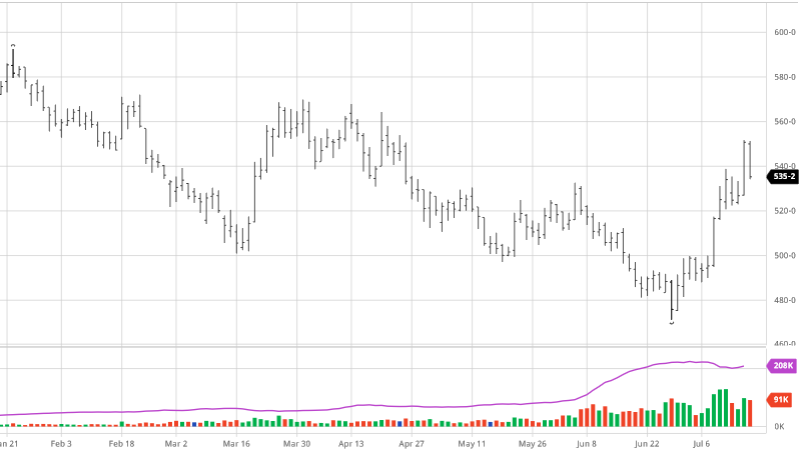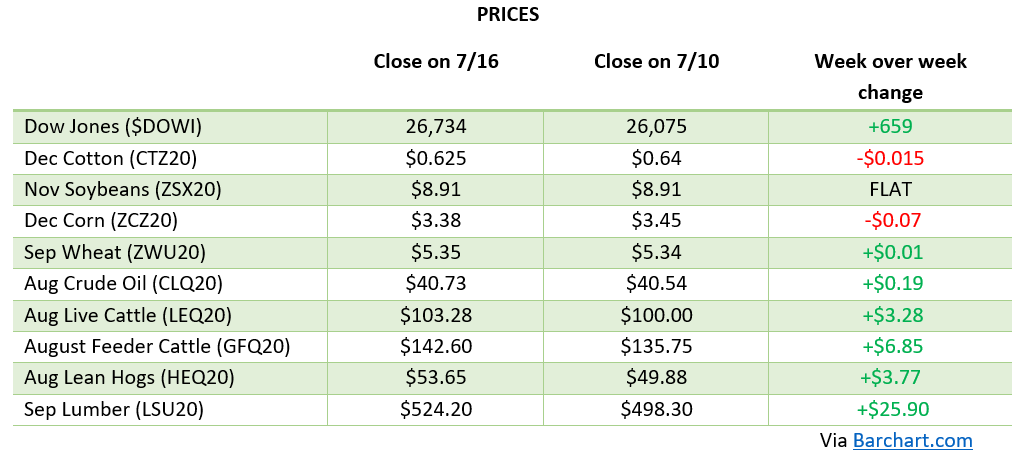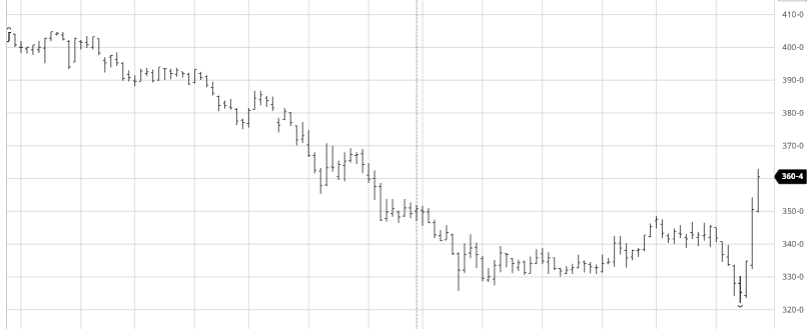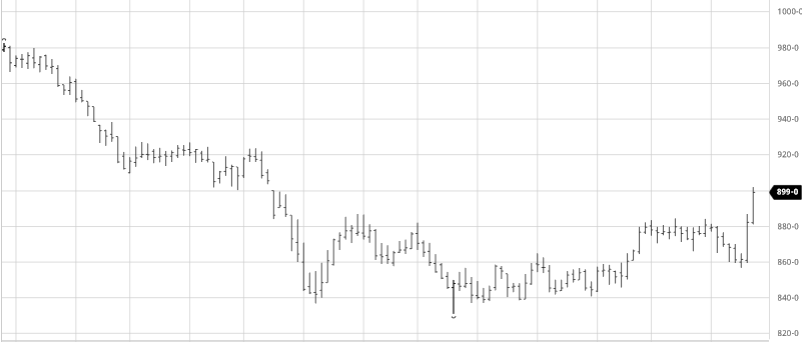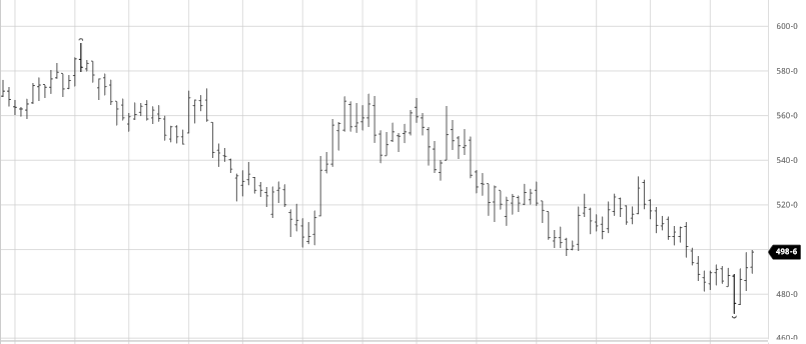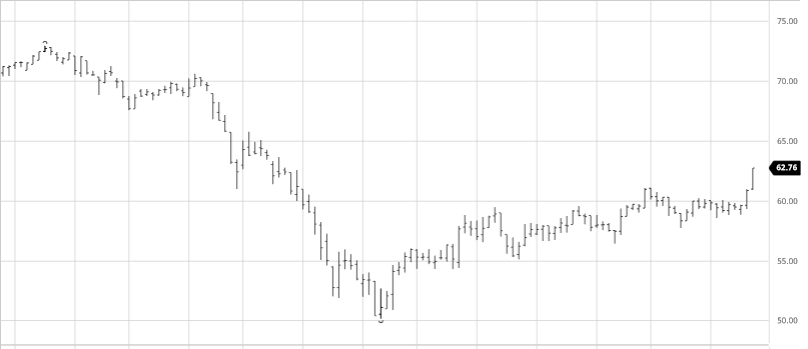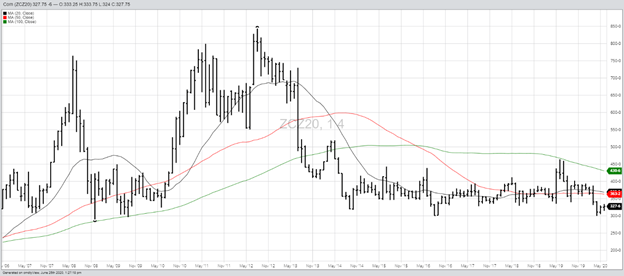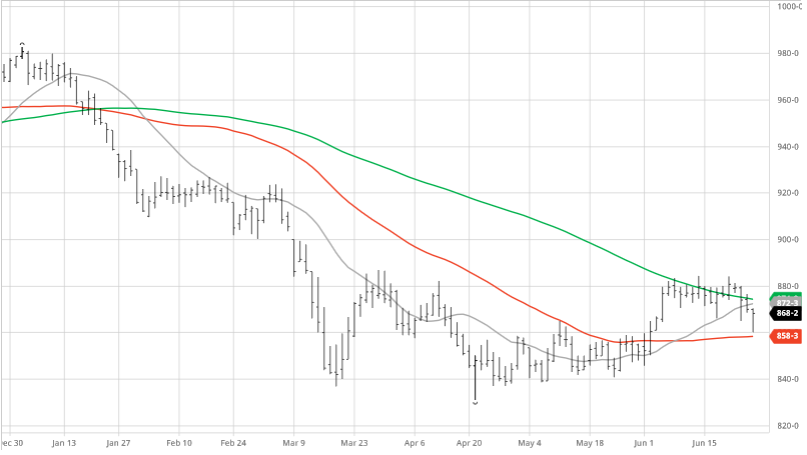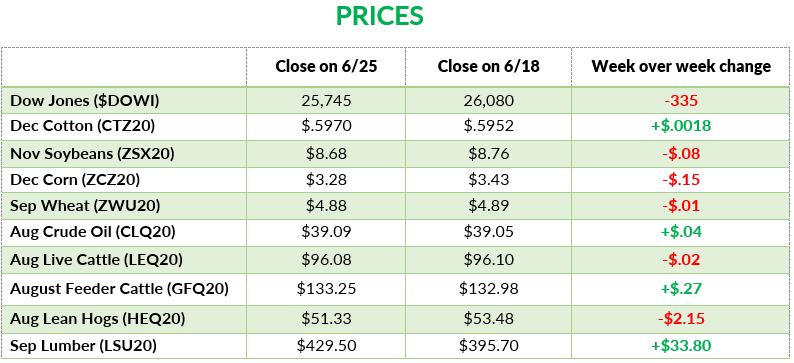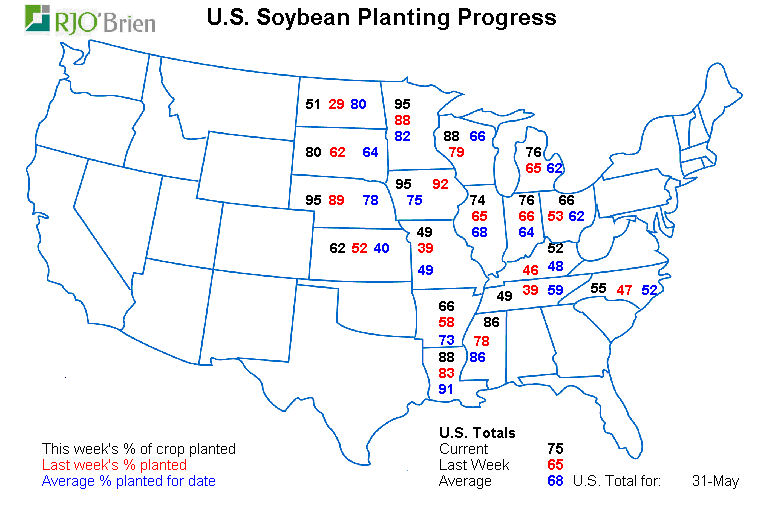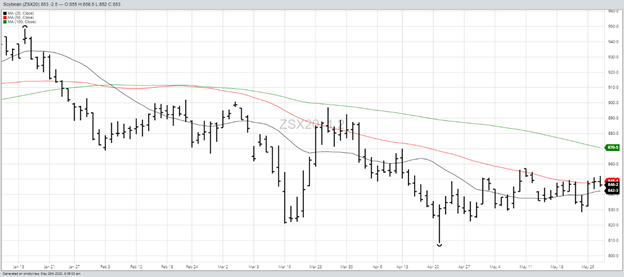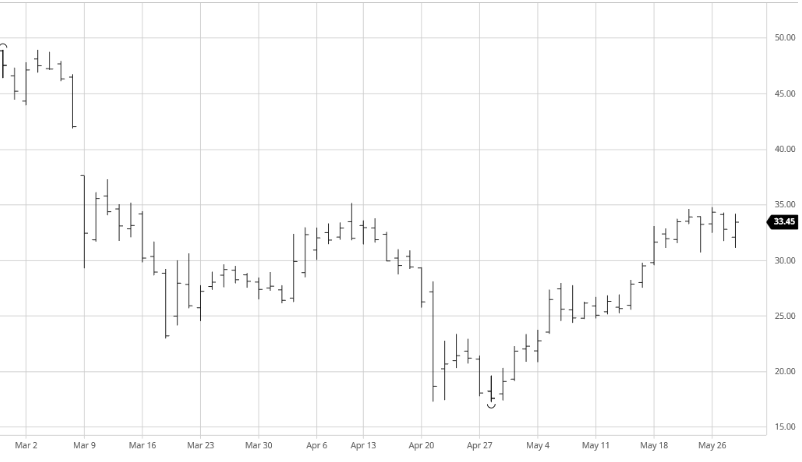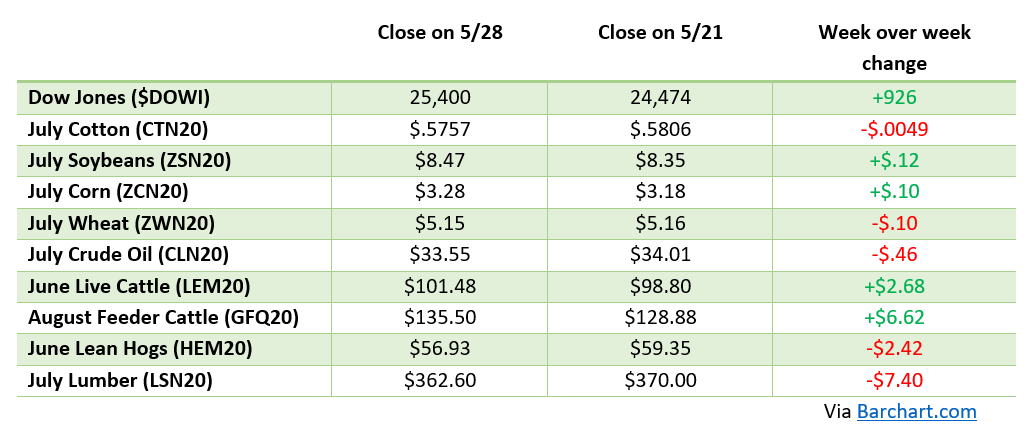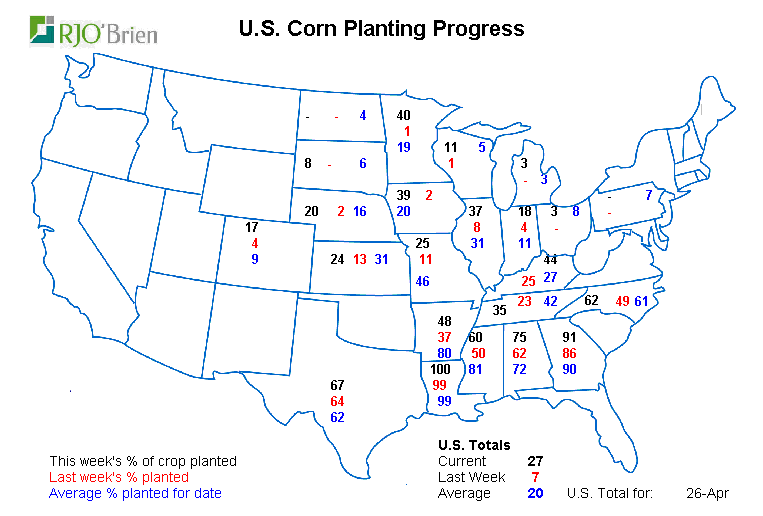
Corn rallied this week following Monday’s USDA report that was relatively neutral. The USDA left expected US yield the same while slightly lowering the 20/21 ending stocks and raising the 2021 production. The USDA did lower Brazil’s corn production numbers, but some estimates still think they are overstating what it will be. The USDA dropped Brazil’s corn production from 98.5 million tons to 93 million, while only raising Argentina’s 1.5 million. The drought conditions persist in the upper Midwest as some areas are expected to get rain over the weekend. The drought in the Canadian prairies and Dakotas does not have any major relief in the forecast as heat and dryness remains in the next weeks forecast. Exports this week were small but not surprising. Weather continues to be the main driver as markets will react to where it rained and how much over the weekend to start next week. Currently about 36% of the US corn production is in an area experiencing drought. As you can see in the drought monitor below northern Iowa and southern Minnesota is a good amount of that.

Soybeans gained on the week as well following the USDA report. There was no adjustment to expected yield and only slight adjustments higher to ending stocks. Beans kept up their momentum following the report for the week before cooling off Thursday. It will be important how they end the week and open Sunday to set the tone for next week. Weather continues to be the main market mover as it will be important heading into the end of July and August. About 31% of the soybean production is in an area currently experiencing drought so any and all rain will be welcome for the crop but the price will be impacted as well.


Dow Jones
The Dow gained on the week despite growing inflation concerns and Powell’s comments about Fed strategy. The Biden administration’s child tax credit has arrived as well with it going into effect this week. The Delta variant continues to spread around the US with some places beginning to bring back mask requirements.
Podcast
Check out our recent podcast with Dr. Greg Willoughby: We’re talking with Greg in the new episode about being a “plant doctor”, weather patterns, GMO & organic produce, crop history, technical advances, level 201 education on agronomy, the agronomy equation, Helena Agri, soil biology, American v European agriculture, Greg’s early background in livestock, and the advancement of native plants to modern produce.
https://rcmagservices.com/the-hedged-edge/
US Drought Monitor
The maps below show the current drought conditions in the US. The second map is last week’s so you can see how the areas that received rain improved or did not.
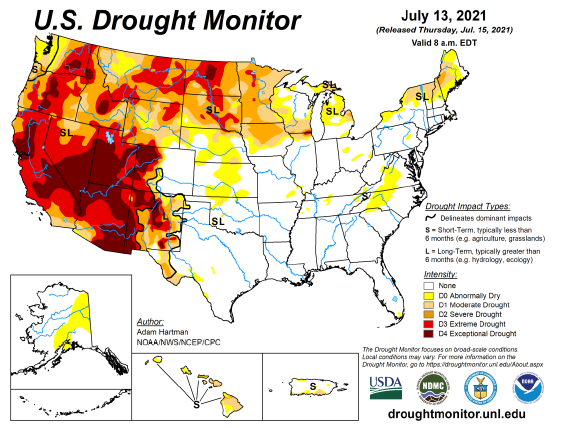
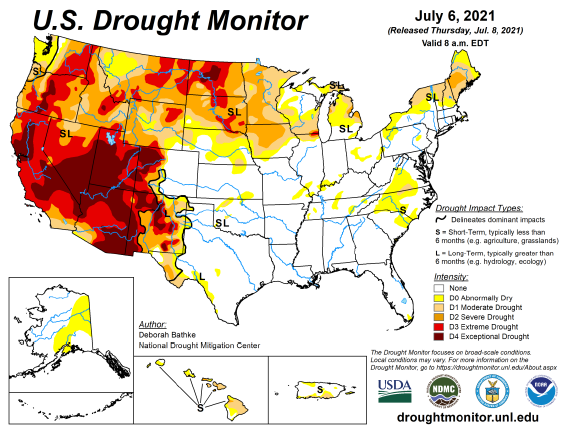
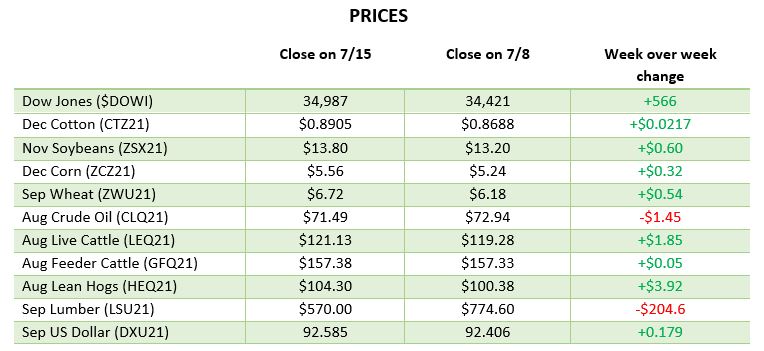
Via Barchart.com










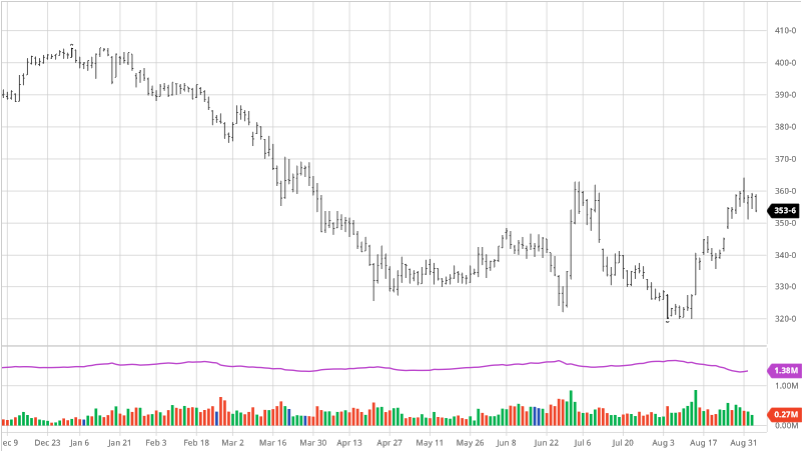
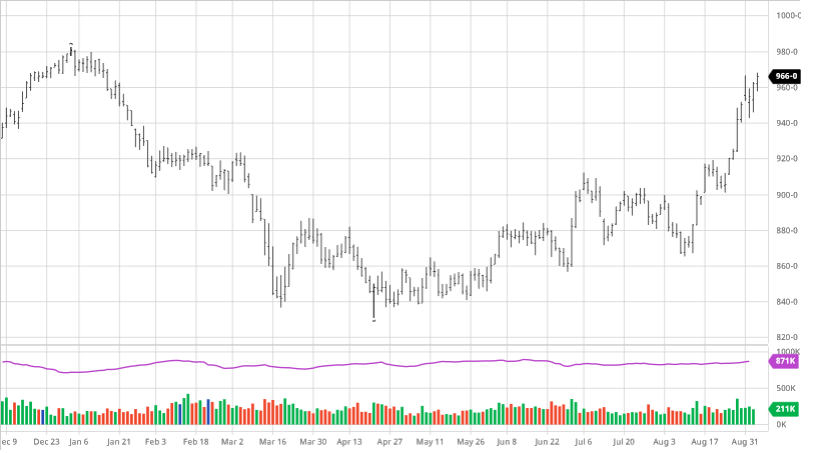
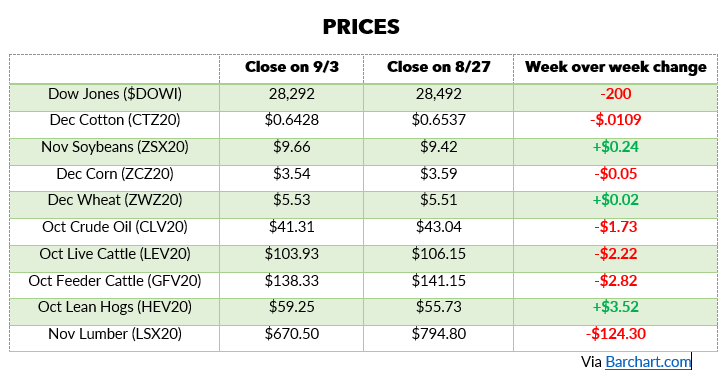

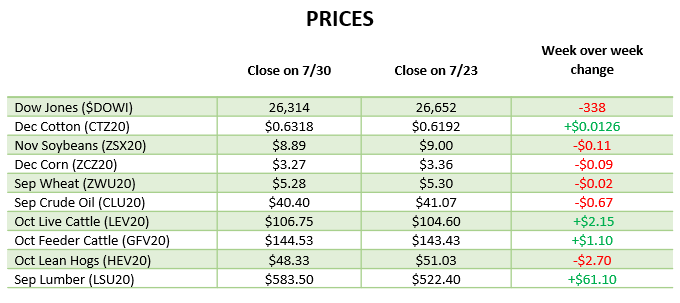
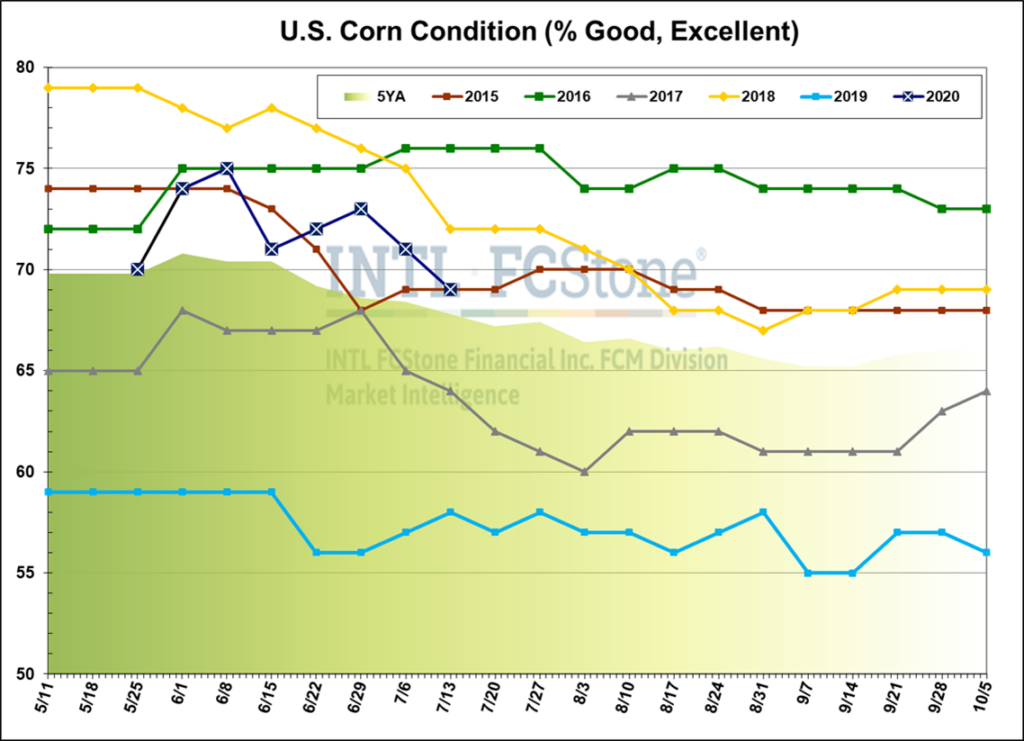
 Large purchases from China gave Wheat a big boost halfway into the week. Wheat did have to give a good chunk of that boost back the following day due to a lack of confirmation on purchases, but any Chinese purchases at this point are beneficial to the markets as other Wheat growing countries are seeing lower yield numbers. As you can see below, markets are well off the lows that we set a few weeks back as Wheat has made a solid rebound. Just like with Soybeans, more confirmed purchases, or any purchases for that matter, would be beneficial to U.S. Wheat.
Large purchases from China gave Wheat a big boost halfway into the week. Wheat did have to give a good chunk of that boost back the following day due to a lack of confirmation on purchases, but any Chinese purchases at this point are beneficial to the markets as other Wheat growing countries are seeing lower yield numbers. As you can see below, markets are well off the lows that we set a few weeks back as Wheat has made a solid rebound. Just like with Soybeans, more confirmed purchases, or any purchases for that matter, would be beneficial to U.S. Wheat.